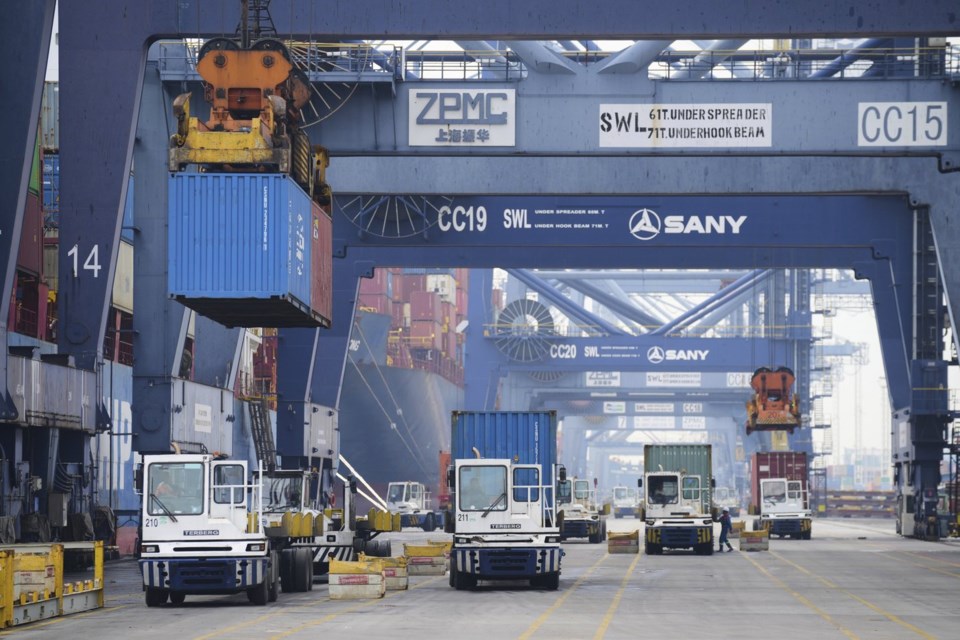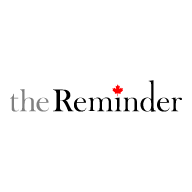President Donald Trump has sent letters to a handful of countries this week outlining higher tariffs they'll face if they don't make trade deals with the U.S. by Aug. 1.
Some of these import taxes mirror the same, so-called “reciprocal" rates Trump unveiled against dozens of trading partners in April — the bulk of which were later postponed just hours after taking effect. But many levies that Trump is now pledging to impose next month are higher or lower than those previously-announced amounts, signaling some sway in recent negotiations.
So far, Trump has warned 22 nations this week, including major trading partners like South Korea and Japan, that steeper tariffs will be imposed on them starting Aug. 1. Nearly all of these letters took the same general tone with the exception of Brazil — which Trump has singled out in an apparent personal grudge over the trial of former president Jair Bolsonaro, charged with trying to overturn his 2022 election loss.
And unlike others targeted this week, Brazil wasn’t previously threatened with an elevated “reciprocal” rate. Still, nearly every country has faced a minimum 10% levy on goods entering the U.S. since April, on top of other sectoral levies. And future escalation is still possible. In his letters, which were posted on Truth Social, Trump warned countries that they would face even higher tariffs if they retaliated by increasing their own import taxes.
Here's a look at the countries that have gotten tariff letters so far — and where things stand now:
Brazil
Tariff rate: 50% starting Aug. 1. Again, Brazil wasn't threatened with an elevated “reciprocal” rate in April — but, like other countries, has faced Trump's 10% baseline over the last three months.
Key exports to the U.S.: Petroleum, iron products, coffee and fruit juice.
Response: In a forceful response, Brazilian President Luiz Inacio Lula da Silva said Trump’s tariffs would trigger the country’s economic reciprocity law — which allows trade, investment and intellectual property agreements to be suspended against countries that harm Brazil’s competitiveness. He also noted that the U.S. has had a trade surplus of more than $410 billion with Brazil over the past 15 years.
Myanmar
Tariff rate: 40% starting Aug. 1. That's down from 44% announced in April.
Key exports to the U.S.: Clothing, leather goods and seafood.
Response: Maj. Gen. Zaw Min Tun, the spokesperson for Myanmar’s military government said it will follow up with negotiations.
Laos
Tariff rate: 40% starting Aug. 1. That's down from 48% announced in April.
Key exports to the U.S.: Shoes with textile uppers, wood furniture, electronic components and optical fiber.
Cambodia
Tariff rate: 36% starting Aug. 1. That's down from 49% announced in April.
Key exports to the U.S.: Textiles, clothing, shoes and bicycles.
Response: Cambodia's chief negotiator, Sun Chanthol, said the country successfully got the tariff dropped from the 49% Trump announced in April to 36% and is ready to hold a new round of negotiations. He appealed to investors, especially factory owners, and the country's nearly 1 million garment workers not to panic about the tariff rate announced Monday.
Thailand
Tariff rate: 36% starting Aug. 1. That's the same rate that was announced in April.
Key exports to the U.S.: Computer parts, rubber products and gemstones
Response: Thailand’s Deputy Prime Minister Pichai Chunhavajira said Thailand will continue to push for tariff negotiations with the United States. Thailand on Sunday submitted a new proposal that includes opening the Thai market for more American agricultural and industrial products and increasing imports of energy and aircraft.
Bangladesh
Tariff rate: 35% starting Aug. 1. That's down from 37% announced in April.
Key export to the U.S.: Clothing.
Response: Bangladesh’s finance adviser Salehuddin Ahmed said Bangladesh hopes to negotiate for a better outcome. There are concerns that additional tariffs would make Bangladesh’s garment exports less competitive with countries like Vietnam and India.
Serbia
Tariff rate: 35% starting Aug. 1. That's down from 37% announced in April.
Key exports to the U.S.: Software and IT services; car tires.
Indonesia
Tariff rate: 32% starting Aug. 1. That’s the same rate that was announced in April.
Key exports to the U.S.: Palm oil, cocoa butter and semiconductors
Algeria
Tariff rate: 30% starting Aug. 1. That’s the same rate that was announced in April.
Key exports to the U.S.: Petroleum, cement and iron products.
Bosnia and Herzegovina
Tariff rate: 30% starting Aug. 1. That's down from 35% announced in April.
Key exports to the U.S.: Weapons and ammunition
Iraq
Tariff rate: 30% starting Aug. 1. That's down from 39% announced in April.
Key exports to the U.S.: Crude oil and petroleum products.
Libya
Tariff rate: 30% starting Aug. 1. That's down from 31% announced in April.
Key exports to the U.S.: Petroleum products.
South Africa
Tariff rate: 30% starting Aug. 1. That’s the same rate that was announced in April.
Key exports to the U.S.: Platinum, diamonds, vehicles and auto parts
Response: The office of South African President Cyril Ramaphosa said in a statement that the tariff rates announced by Trump mischaracterized the trade relationship with the U.S., but it would “continue with its diplomatic efforts towards a more balanced and mutually beneficial trade relationship with the United States” after having proposed a trade framework on May 20.
Sri Lanka
Tariff rate: 30% starting Aug. 1. That's down from 44% announced in April.
Key exports to the U.S.: Clothing and rubber products.
Brunei
Tariff rate: 25% starting Aug. 1. That's up from 24% announced in April.
Key exports to the U.S.: Mineral fuels and machinery equipment.
Moldova
Tariff rate: 25% starting Aug. 1. That's down from 31% announced in April.
Key exports to the U.S.: Fruit juice, wine, clothing and plastic products.
Japan
Tariff rate: 25% starting Aug. 1. That's up from 24% announced in April.
Key exports to the U.S.: Autos, auto parts, electronics
Response: Japanese Prime Minister Shigeru Ishiba called the tariff “extremely regrettable” but said he was determined to continue negotiating.
Kazakhstan
Tariff rate: 25% starting Aug. 1. That's down from 27% announced in April.
Key exports to the U.S.: Oil, uranium, ferroalloys and silver.
Malaysia
Tariff rate: 25% starting Aug. 1. That's up from 24% announced in April.
Key exports to the U.S.: Electronics and electrical products.
Response: Malaysia's government said it will pursue talks with the U.S. A cabinet meeting is scheduled for Wednesday.
South Korea
Tariff rate: 25% starting Aug. 1. That's the same rate that was announced in April.
Key exports to the U.S.: Vehicles, machinery and electronics.
Response: South Korea’s Trade Ministry said early Tuesday that it will accelerate negotiations with the United States to achieve a deal before the 25% tax goes into effect.
Tunisia
Tariff rate: 25% starting Aug. 1. That's down from 28% announced in April.
Key exports to the U.S.: Animal and vegetable fats, clothing, fruit and nuts.
Philippines
Tariff rate: 20% starting Aug. 1. That's down from 17% announced in April.
Key exports to the U.S.: Electronics and machinery, clothing and gold.
The Associated Press




